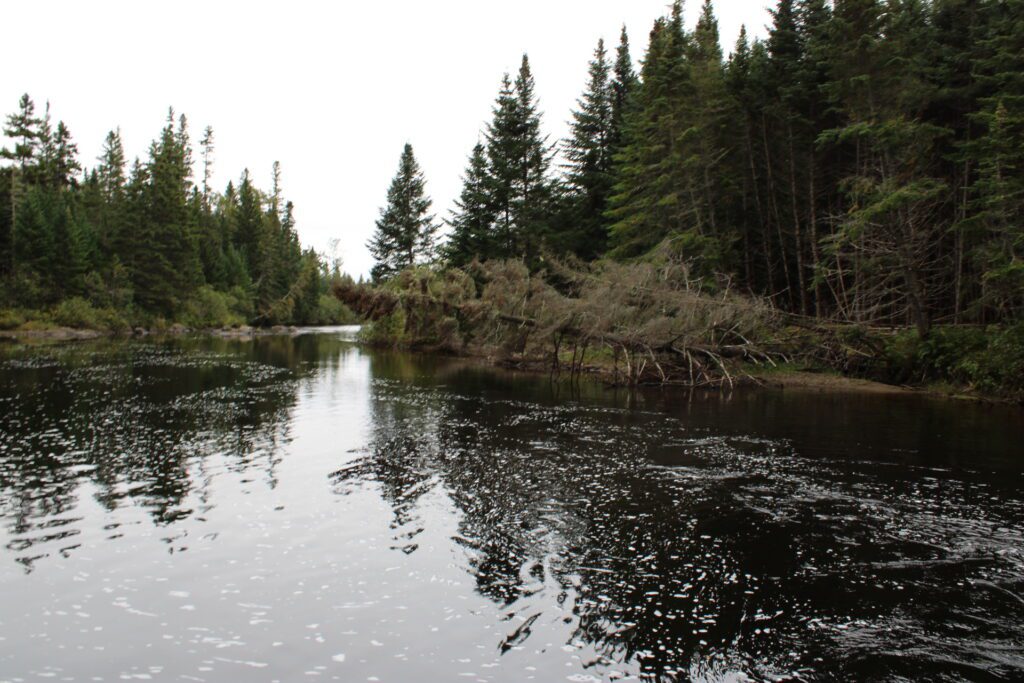There’s a lot of layers to brook trout. Catch a nice colored up one and you’ll witness a visual display that you don’t see too often in the animal kingdom. I’ve spent most of my fly fishing career around the places that these fish call home, and it still sometimes shocks me to find something so brilliantly patterned in water that is often stained and shaded.
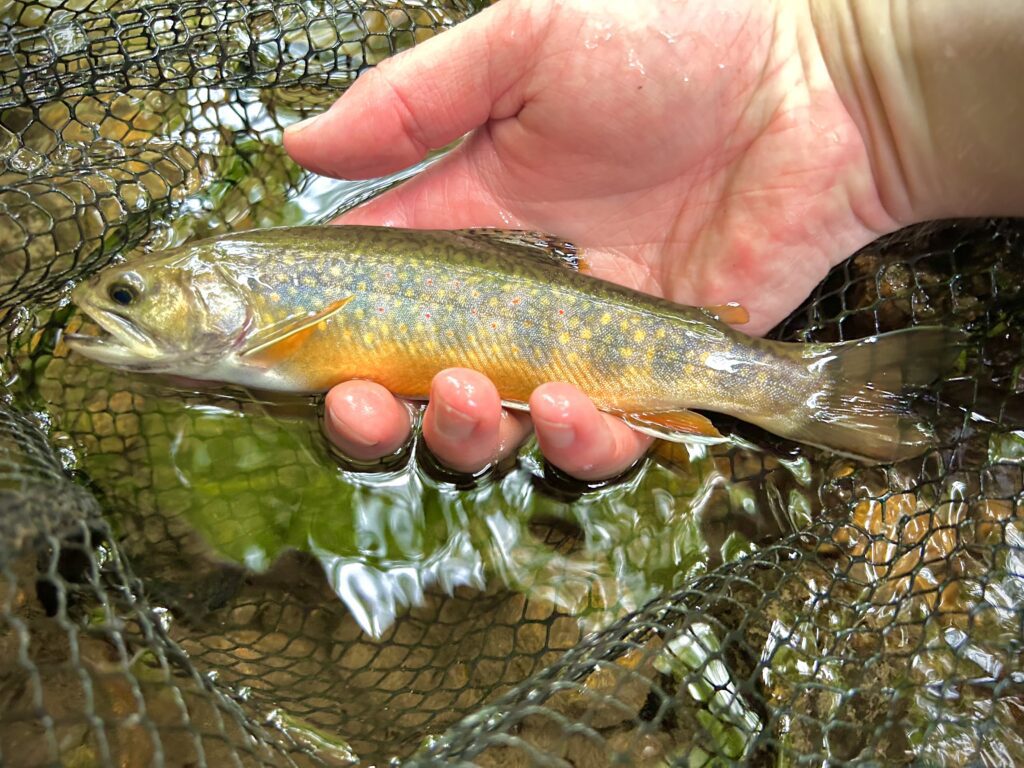

There’s also the historical factor, both good and bad. Brook trout were one of the first American sport fish and drew settlers, tourists, and even a few notable historical figures out to their local streams in the early days of European colonization. Then came centuries of industrialization, non-native species, climate change, and a dizzying amount of other factors that spelled the end for most of the U.S.’s native brook trout fisheries. When I catch a brook trout out of a northeastern stream, the fly fishing nerd in me feels connected to the fish’s rich angling culture, both past and present. The conservation nerd in me marvels at the fact that populations of brookies even survived where they did.
My love for native brook trout is also driven by a personal connection. These fish were one of the first species I wanted to catch on the fly when I started out, and years later I still haven’t grown tired of chasing them all over the Northeast. I’ve also been involved in brook trout conservation through research projects and habitat restoration over the years, which has added another tier of understanding and respect around the species. Brook trout are home for me, and after a few years of living in the West I was back within reach of my old stomping grounds, as well as a few new ones I had learned of in my absence. These spots demonstrated the multifaceted survival capabilities of brook trout and summed up a history of loss and resilience. They also just sounded plain fun to fish, and that was enough for me. After two brookie-less seasons, I was back home and rumor had it the nights were getting chillier up north. It was time to hit the road.
Salt
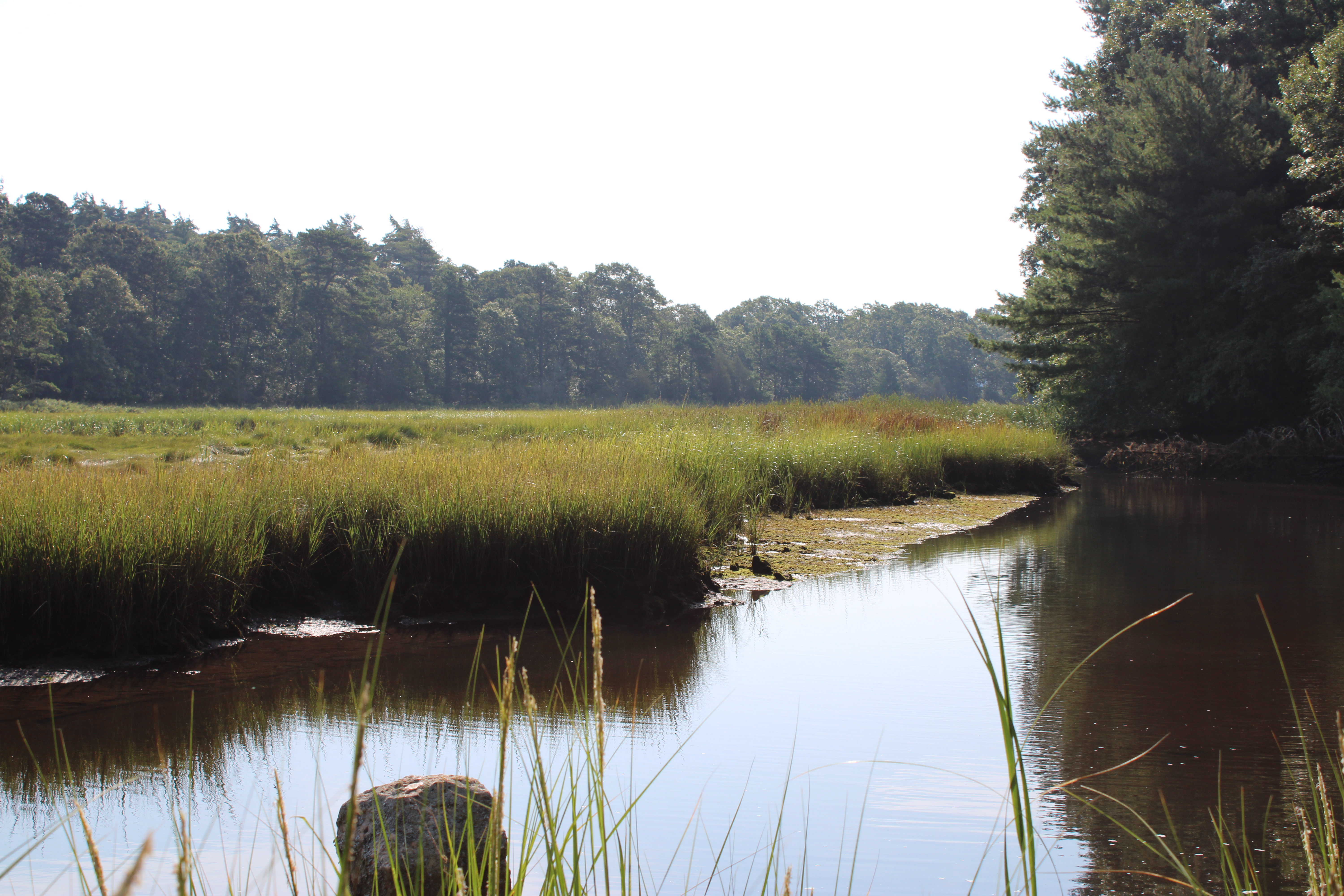

This wasn’t your everyday trout stream. The creek meandered through a treeless salt marsh, its gin clear water muddying quickly as it emptied into the bay just a couple hundred yards from where I stood. The air smelled of marine detritus left behind from last night’s high tide. Crabs and shiners milled around patches of barnacles cemented to the bank. If I didn’t know better, I’d be throwing baitfish patterns down the beach for cruising striped bass or bluefish. Instead I’d be heading into the pine-oak forested interior to look for a largely forgotten relic of early North American sport fishing— the sea-run brook trout.
Centuries ago, coastal streams from Long Island to northeastern Canada held healthy populations of native brookies that would venture to the sea. The rich waters of New England’s estuaries gave char the opportunity to grow bigger and faster than they could in their natal creeks. When European settlers began colonizing and fishing the region, sea-run brook trout became a popular target. A big “salter” was not only known to be good eating, but was regarded as a worthy and challenging quarry for sport anglers. Fishing clubs targeting coastal brook trout emerged on the best waters of the Northeastern coasts. The fish began attracting some big names in American history, some of whom also made their way into the angling record books. Not far from the Massachusetts stream where I was currently rigging up, Daniel Webster and future president Grover Cleveland caught salters by the pounds. Webster especially was a die-hard brookie angler, and even caught one of the biggest salters on record— a 14 pound behemoth out of the Carmens River in New York in 1827.
Sea-run brook trout of that size class are now long gone. The fact that our 19th century angling forefathers kept virtually every fish they caught didn’t help, but years of development and agriculture around what would become one of the country’s most densely populated areas finally finished off most American salter streams. What remains are a handful of waters that have stood the test of time through the work of dedicated conservationists and a fair amount of luck. The fish may be small now, but they represent a lineage of animals with historical and cultural significance to our sport. Brook trout that go to the ocean are in my opinion also a cool enough reason to check them out. Almost two hundred years after Daniel Webster’s double digit entry, I drove through a series of upscale Cape Cod neighborhoods and into a small gravel lot in the woods outside of town. I was ready to go back in time.
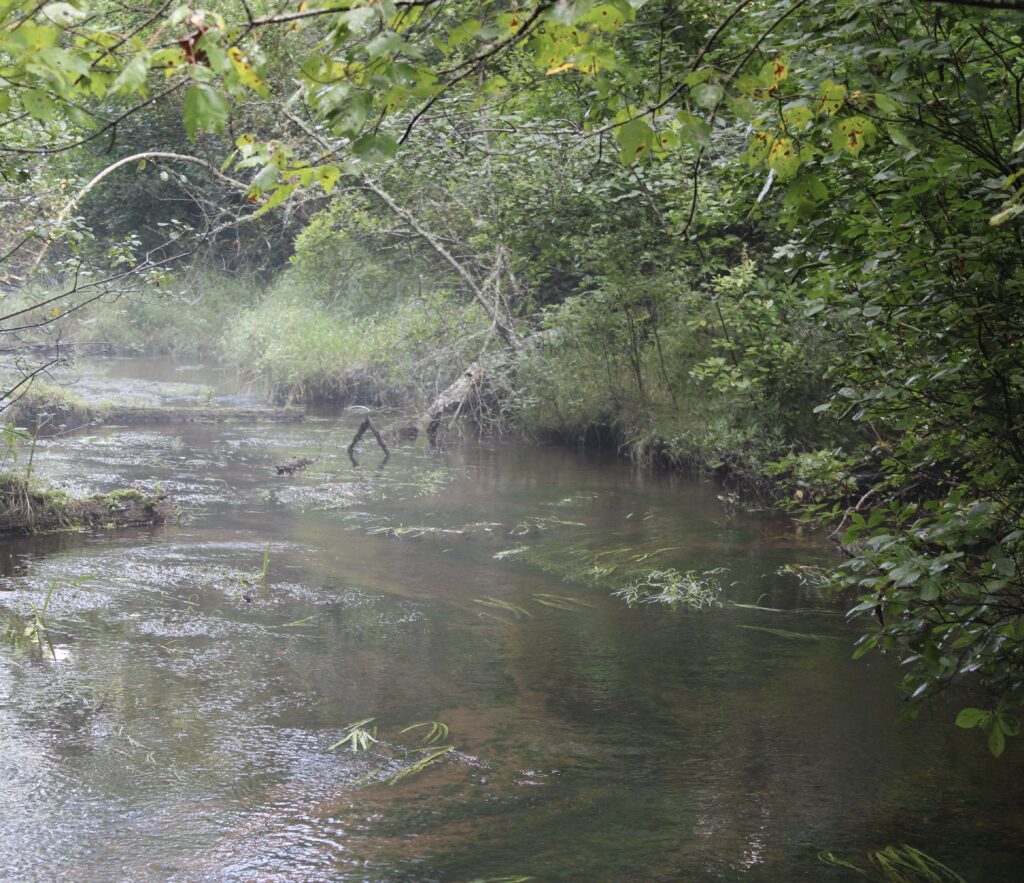

I tried to be open to the idea that I could get skunked. Low pressured brook trout streams are usually pretty productive, though I wasn’t completely sure how fish in this system would behave. There aren’t too many studies focused on salter life history, but it’s generally understood that they will move in and out of estuaries multiple times a year depending on water temperatures, food availability, and spawning activity. It was strange to chase such a familiar fish in a place that over my entire angling career had been drilled into me as somewhere these fish couldn’t survive. Although the first couple of holes looked like a stagnant muddy swamp, the water ran clear and cold from upstream. A series of spring seeps kept this creek at tolerable temperatures for trout coming out of warmer coastal waters. Off a high bank, I poked my head out of the brush and spooked a fish from under me. It moved quickly around the eelgrass and schools of mummichogs as it headed upstream but it was undeniably a trout in the marsh. The salters were real, and there were at least a few here.
Reaching them in the marsh was another story. The maze of muddy channels was difficult to navigate without spooking more fish, and after a few failed attempts I decided to try my luck where the estuary met forest and a more defined riverbed. Even here it was clear the stream wasn’t your classic freestone New England brookie water. Walking the banks of this mini spring creek had an almost dream-like feel to it. The low canopy only allowed a few beams of light to pierce through the mist hanging over the water, and the forest muffled the sounds of the seabirds and boats far out in the bay while still allowing enough in from the outside to make you question where you were. It was a clash of worlds that balanced into a system no longer found in many places. History, rarity, and beauty combined to make just standing on the banks of this stream a special experience.
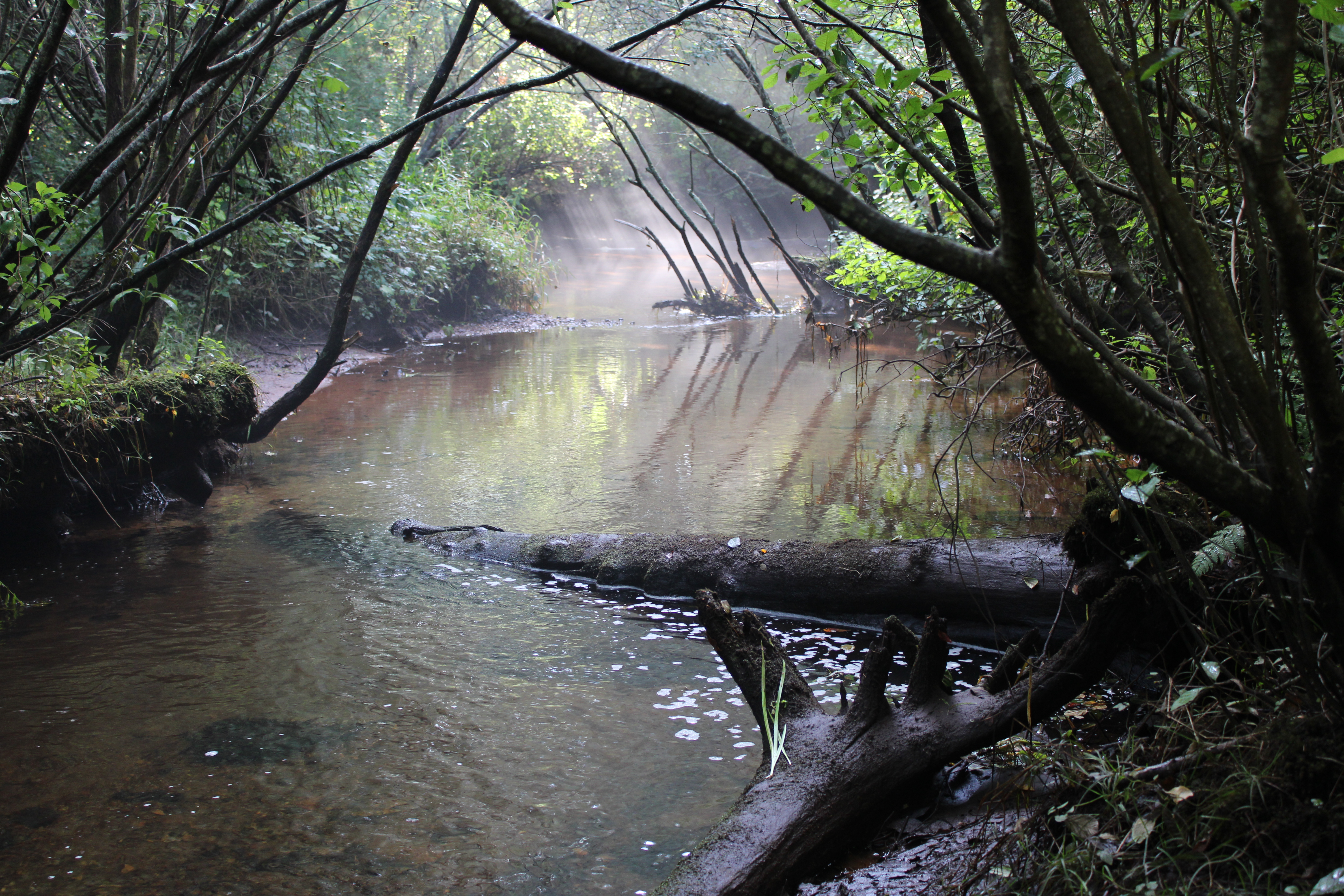

That trance was broken when a larger-than-expected trout slammed my jigged streamer from under a log jam. I plunged the tip of my three weight into the water and dragged the fish out of cover. Finally swimming around my net was a very special native brookie. It’s difficult to determine if a fish is a salter just based on appearance, but its location and its size for the stream seemed to be consistent with other sea runs recorded during studies on this creek and a few surrounding ones.
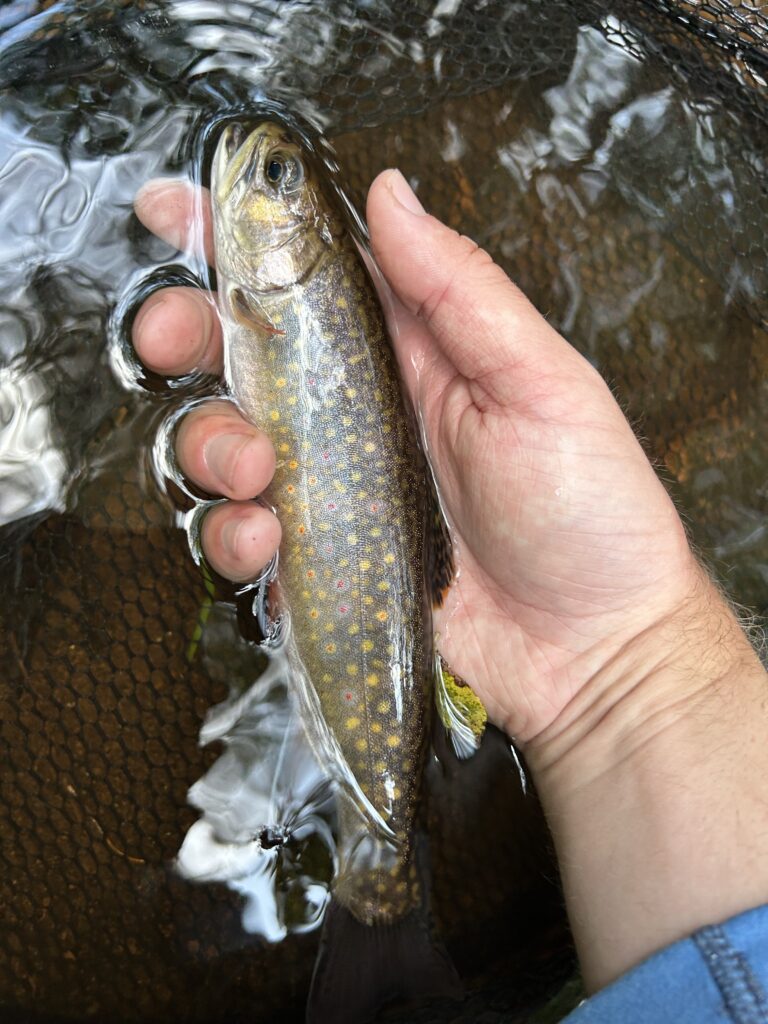

Over the next few hours I caught more brook trout out of deeper depressions and structure. Some of the very small fish seemed more like they would be residents of the stream, but it was wild to think that any of these little char could one day try their luck in the salt. Some of them may already have. Back in the day it wouldn’t have been uncommon to have fish up to a few pounds returning to this creek. Recent surveys had found a few larger fish in the system, but they were few and far between.
It’s also impossible to discuss the survival of sea-run brook trout in these areas without mentioning the massive effort from volunteers and conservation groups to protect these fish. Salters may have been largely left behind by the fly fishing community, but a few of their last strongholds in Massachusetts are well supported by local anglers and non-profits. Organizations like the Sea Run Brook Trout Coalition and regional Trout Unlimited chapters have put in thousands of hours and raised millions of dollars to get these creeks back to where they are now. My opportunity to enjoy such a rare fishery is thanks in no small part to them.
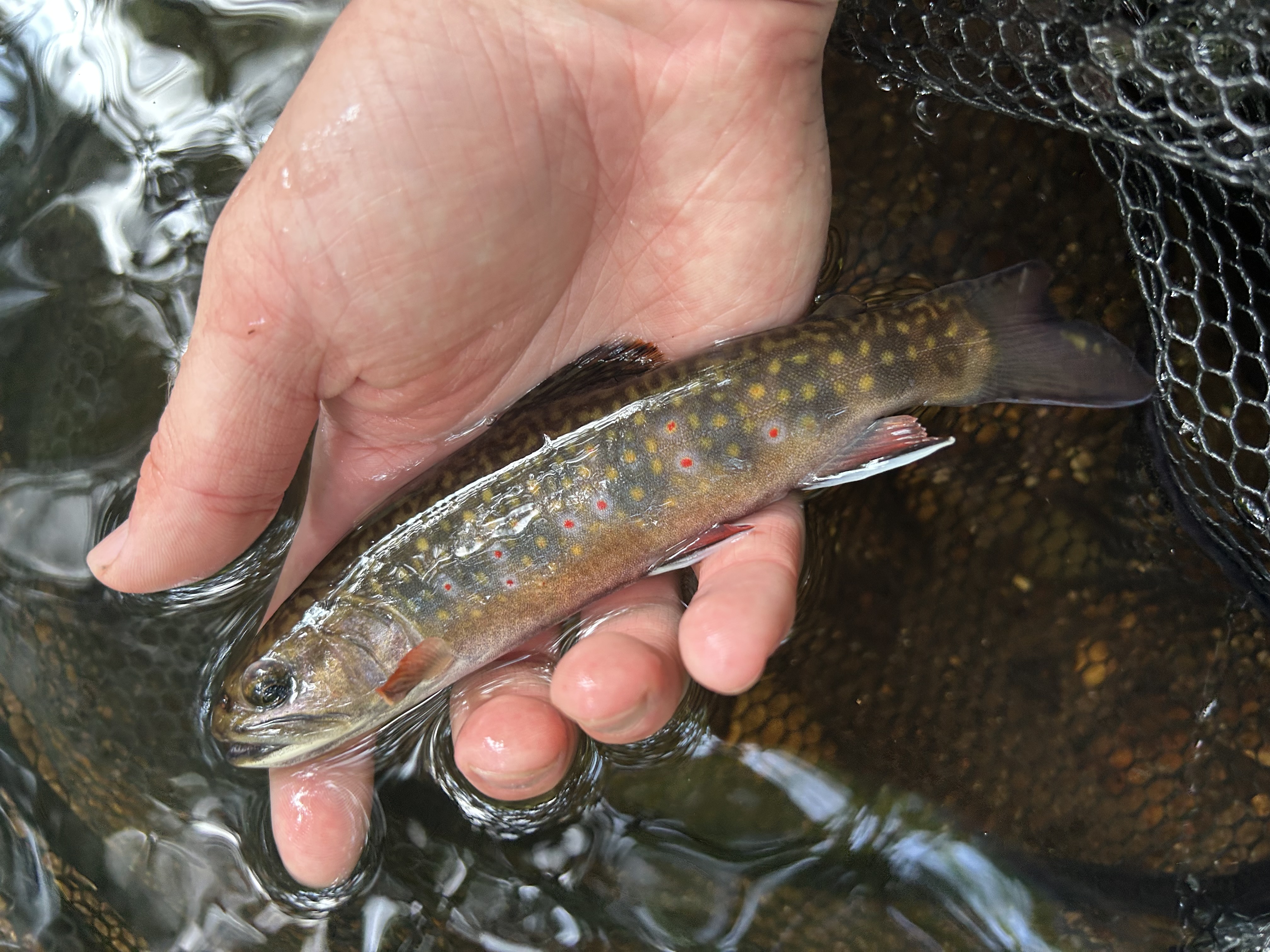

The creek didn’t take long to fish through solo, but stepping back out into view of the bustling bay had the same effect as leaving a movie theater after an hours-long show. Upstream from the estuary was a world away from the harsh light of a day that had started without me while I was in the woods. I nursed my brook trout hangover all the way back to the car. The future of salter streams like this may be unknown, but encountering them here felt like I had made a connection with a larger part of this fish’s story. As I began my drive to Boston, the brief flash of timeless wilderness I had experienced turned back into a scene of manicured waterfront lawns, crowded lobster shacks, and jet skis. Knowing the history of the local salter fisheries you can’t help but wonder what the members of 19th century high society would think if they saw these waters now, and if they would’ve valued them even more knowing that they would soon be lost. I think I’d just make Daniel Webster sit through several hours of end-of-weekend Cape Cod traffic as punishment.
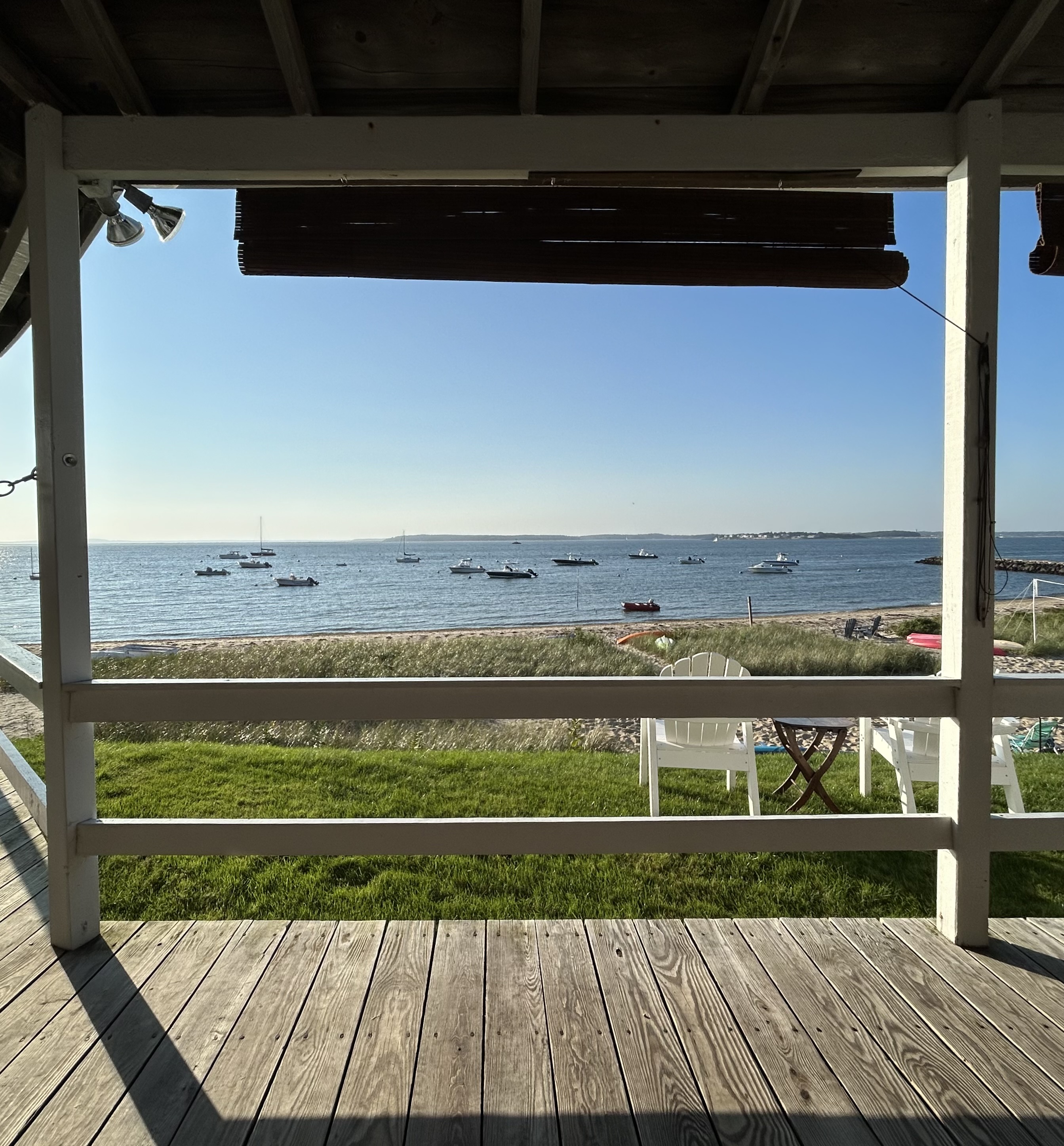

Green Mountain Intermission
Funny enough, I wouldn’t be fishing on this leg of the trip. I’d barely be in Burlington for two days, and my schedule while in town was pretty tight. It still didn’t stop me from getting some FOMO as I drove past the exits to my favorite brookie streams off I-89.
What makes this part of the trip worth mentioning in the context of brook trout is it provides an opportunity to explore their fisheries as most of the fly fishing community sees them. I spent some of my most learned years in fly fishing living in Vermont. The hours exploring brookie streams in the Green Mountains was a big part of that, right up there with bowfin, pike, and the rest of the wacky species the Lake Champlain Basin has to offer.
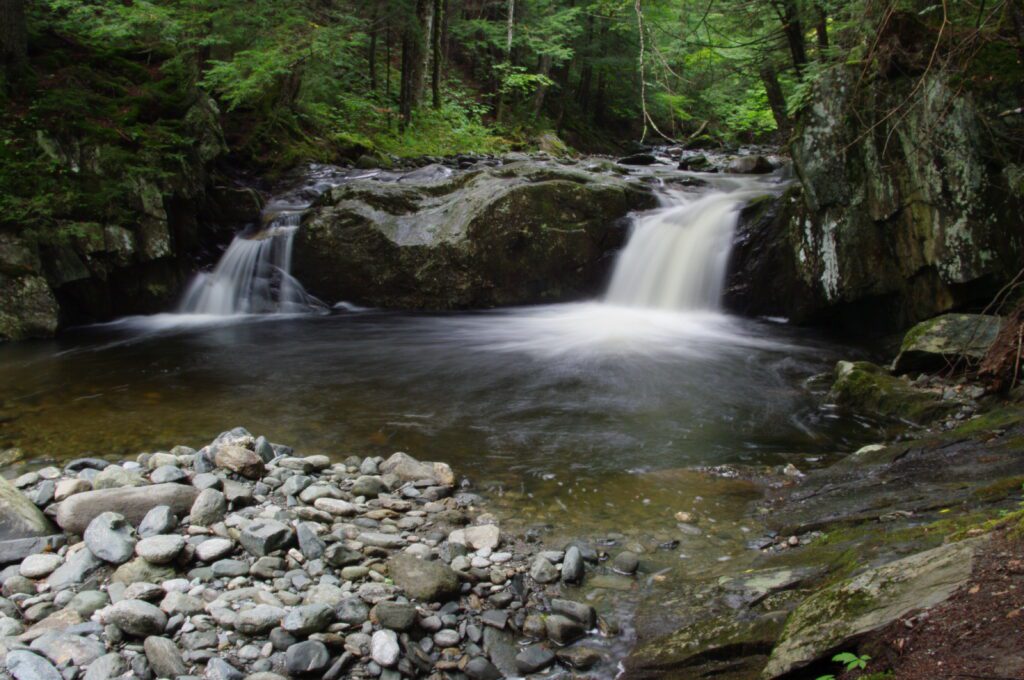

Brook trout began inhabiting eastern streams over ten thousand years ago. They moved into a landscape carved out by retreating glaciers, and occupied water bodies from low elevation ponds to headwater mountain trickles. Similarly to salters, inland brook trout populations couldn’t handle the rapid human growth of the last few centuries. Vermont cleared over eighty percent of its forests by the late 1800s. Many rivers were dammed, channelized, cleared of structure, and fished out. Unlike their sea-run relatives however, fluvial brookies in eastern mountains were able to hold on in high elevation creeks that were too steep for development. Although the bigger picture shows brook trout being extirpated from a great deal of their range in New England, streams in the region’s more mountainous areas still host robust numbers of native char.
Those systems are where brook trout have found their way into the hearts of the locals. If you’re a trout angler here, leaving the pressured, comparatively low density main rivers for a day of rock scrambling and tons of native fish by yourself is pretty hard to beat. With a few minutes on satellite imagery and a little bit of intuition, you can soon find yourself deep in a mountainside hemlock forest with miles of brookies ahead of you. They may not always be big (though there are definitely a few larger than expected char in some of those streams), but there’s a lot of fish in some pretty places.
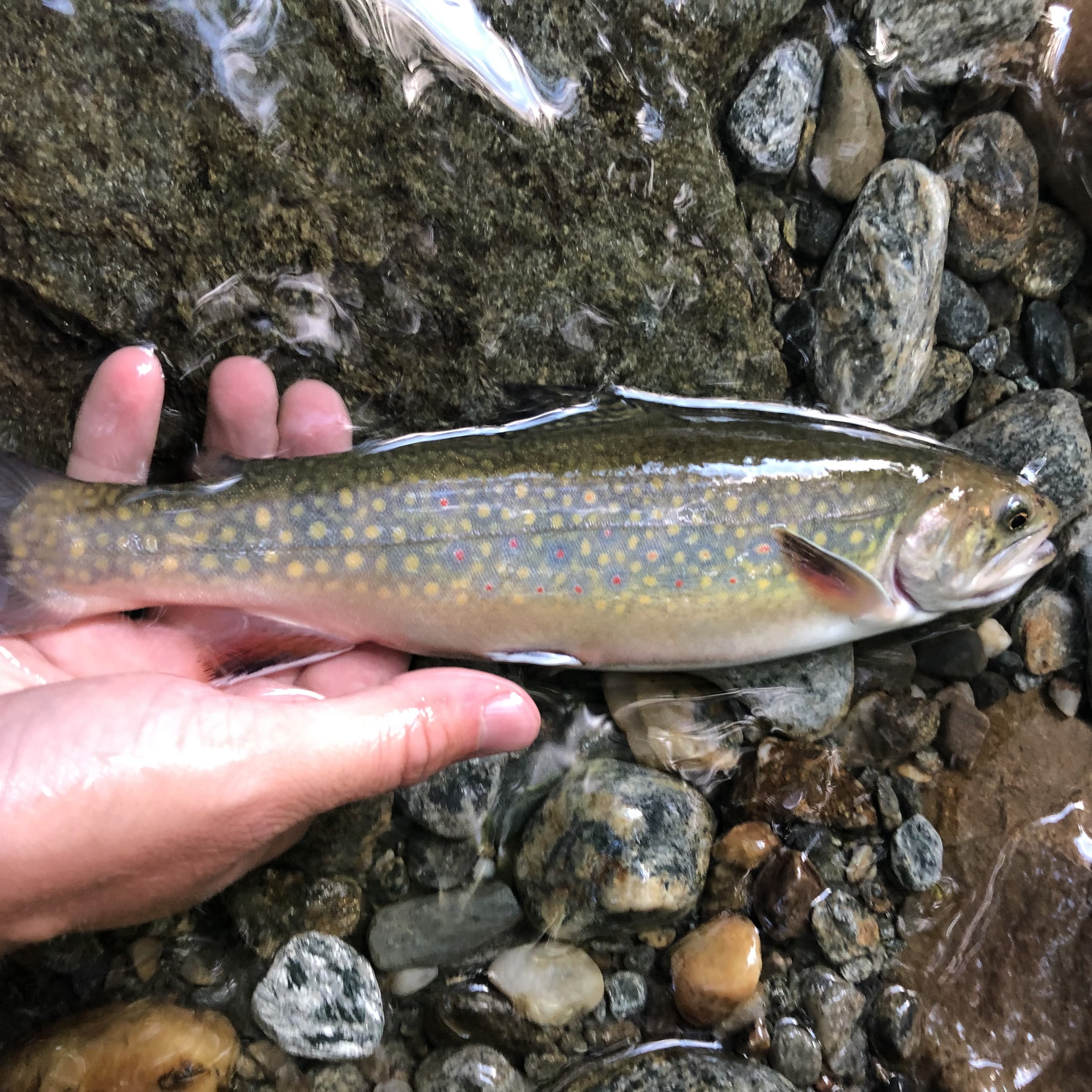

I wish I could say I pulled a quick session together on one of the creeks I speak so highly of here, but my quick layover in Vermont wouldn’t allow for it. Fortunately, I was planning on ending my trip with several days on some of my favorite rivers in New England. This region is one of the last strongholds of big native brook trout in the country, where higher size classes and good numbers have survived since the days of Webster. It was time to load up on fuel, water, and gallons of bug spray, and head into the wilds of Maine.
The North Woods
We set up on our first pool early. The woods to our back and across the river were still pitch black, and our only perception of dawn came from the gray-blue glow that snaked above our heads where the river cut the forest. A half-mile of churning, tannin stained rapids came to an end a few hundred feet upstream of us, the sudden decrease in gradient taming the waters into a slow moving glide. One of my first drifts through an outer seam was cut off by a slight irregular pull from the deep. On my hook set, the fish turned broadside in a flash of red and gold and then headed for the main current.
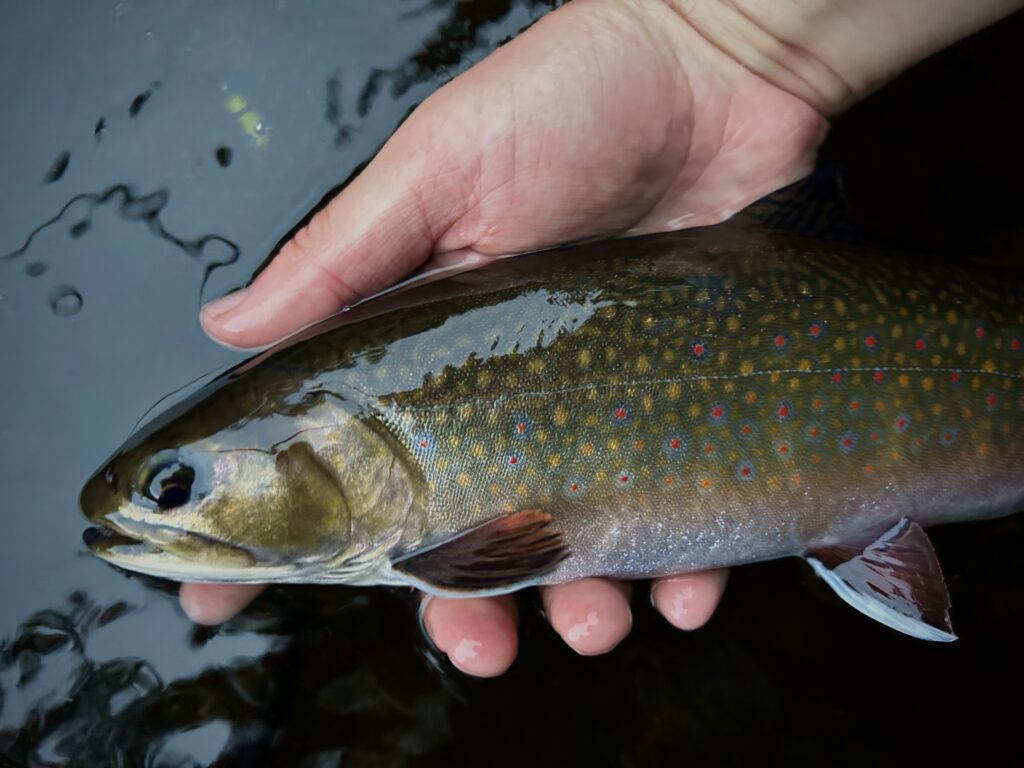

At twelve or thirteen inches the fish wasn’t huge, but it was easily my biggest native brookie since I had returned to the East Coast. It also made up for size with its football-like proportions, a far cry from the lean small stream brookies of the mountains. Here in the big water, even after years of abuse, brook trout are still the top dogs.
My trip’s finale was a team event. Jon and I had first met earlier this year in New Zealand, where I had been a grateful guest in his van on the South Island. Since he’d gotten back to the U.S. we’d fished together a few times, but had consistently talked of doing a trip to our shared old stomping grounds in Maine. It had been a couple of years since we’d been here, but we had finally come full circle.
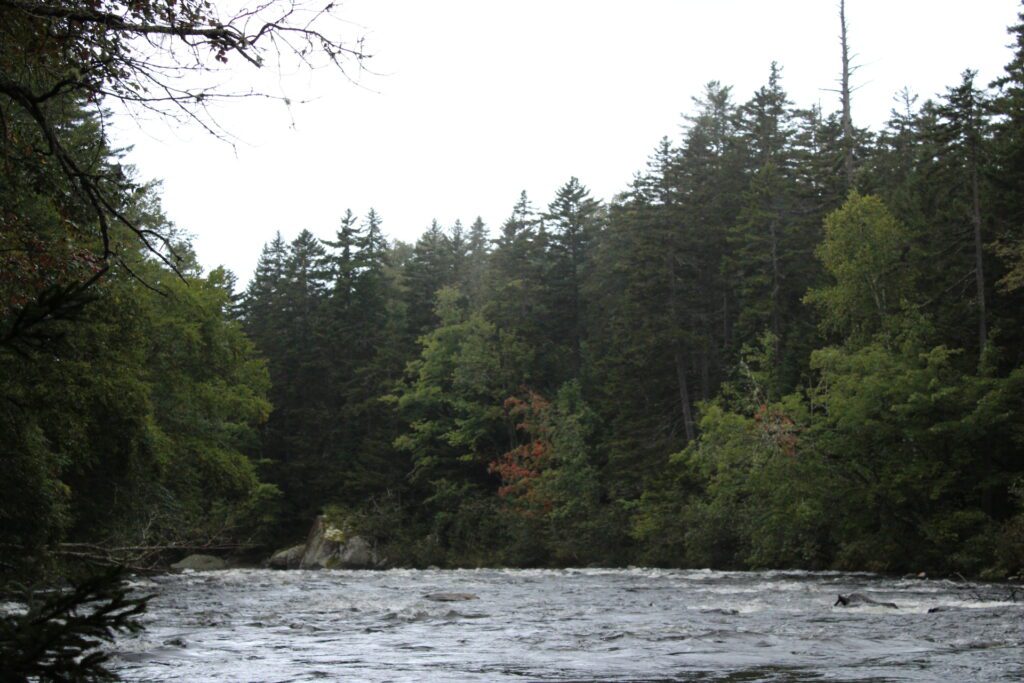

The mighty rivers of inland Maine have been a destination fishery for almost as long as salter streams. Names like Kennabego and Rapid may no longer be as synonymous with fly fishing as Madison or Yellowstone, but they are a large part of how this sport became established in our country. The fishing still isn’t too bad either.


Day one was off to a great start. Jon and I worked through some of our favorite sections of river and continued to pick up good numbers of fat brook trout. The recent rains had kept the river cool and the fish happy. By the afternoon we had plenty of fish on the day, and we started raising our interests in tracking down a big one. In its prime this region was consistently producing eight to ten pound brookies, and although these size classes had dropped off significantly there are still a few bruisers around. The last time I fished here two years ago I caught my biggest native brook trout ever— a 21.75” football that remains one of my favorite fly fishing moments of all time. I had met plenty of locals who had reported fish much bigger out of these waters. By the evening of our fourteen-hour welcome back party, Jon and I decided to put some effort into tracking one down.
Over the next two days the fishing remained fantastic, but weather got steadily worse. We kept our eyes on the radar in the rare pockets of cell service, making calls to dodge heavy rain through the hours. Cresting highway rises on our drives we’d get glimpses of more dark clouds breaking off of the relentless stream of north-moving cells. Jon and I found some great looking new sections of river on these explorations, but good fishing was spotty. We finally made the call that our distaste for the downpours would come second— we had to be where the trout were.
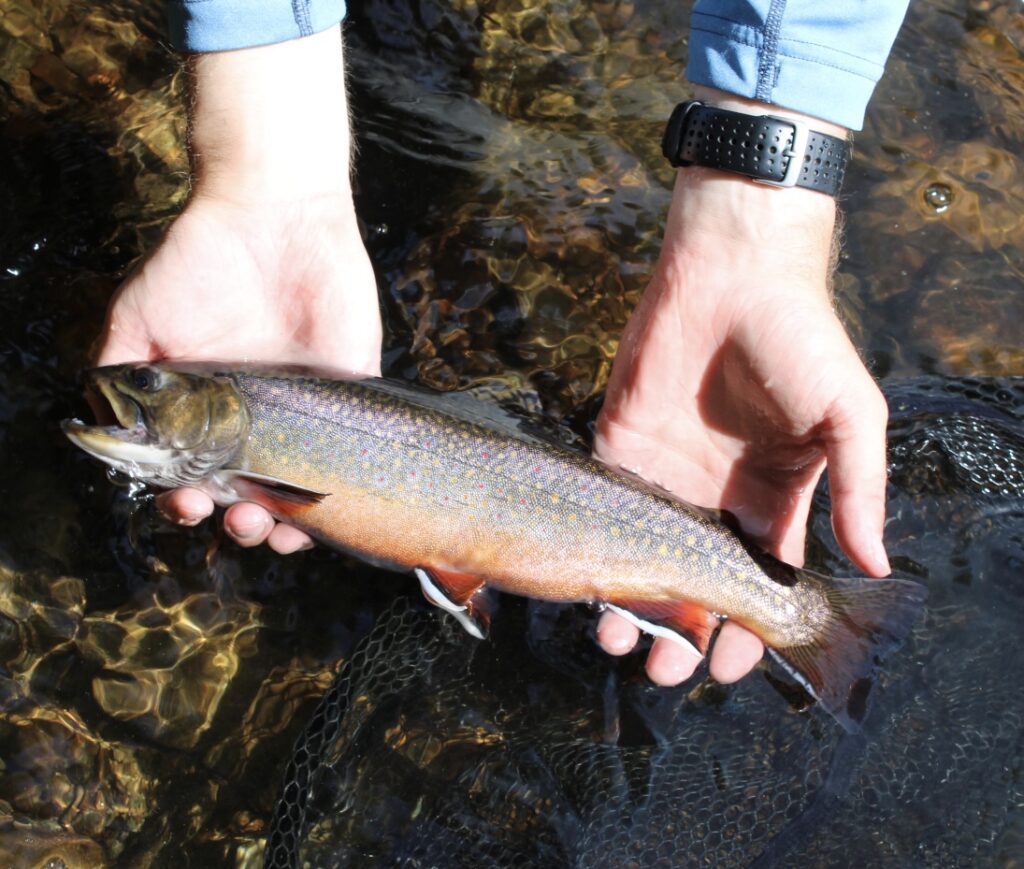

Despite its relative remoteness, the fisheries Jon and I returned to have faced a tough uphill battle. Maine’s waters have been invaded by bass, pike, muskie, lake trout, smelt, and more, displacing brookies and their forage. The effect it has had on brook trout here has been and should be compared to the notorious introduction of lake trout in Yellowstone Lake out west. Countless New England brook trout systems have been forever altered by the introduction of nonnative species, and many more, including the lower reaches of the waters we fished on this trip, are under constant threat of invasion. These fisheries are closely monitored by anglers and researchers, but through the years of my own fishing here I’ve always wondered how long we can keep the invasives at bay. The loss of these fisheries would be catastrophic for the area and fly fishing itself.
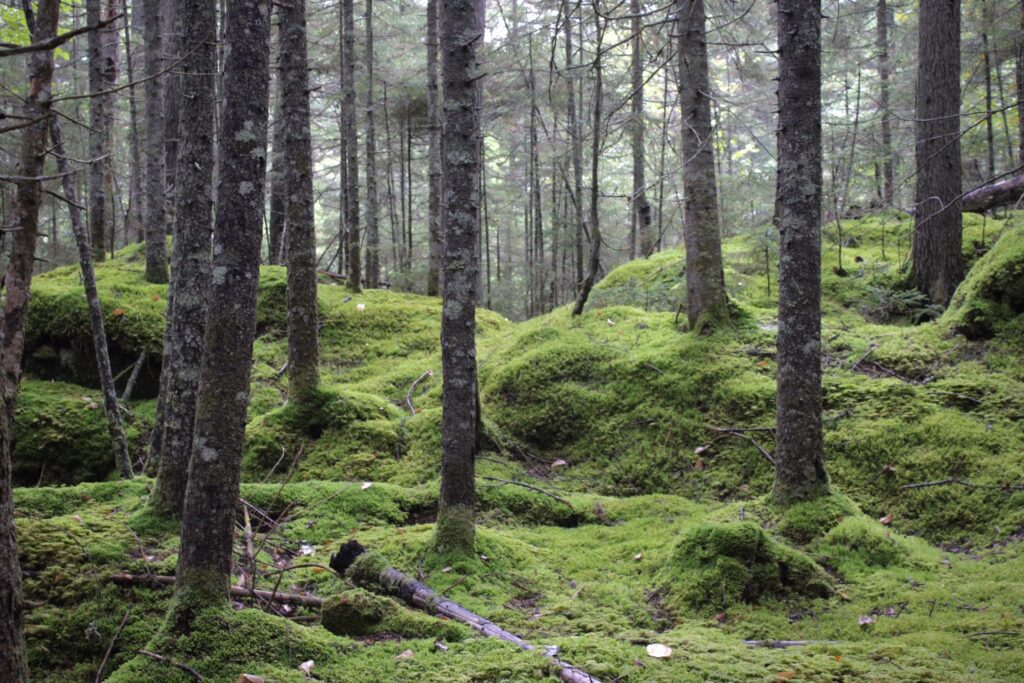

By our final day it was hard to complain about anything fishing related. We were still experiencing the high numbers and above average sized brookies we had looked forward to returning to Maine, and that forecast didn’t look like it would change down the stretch. Even the weather had taken a turn for the better with most of the rain clearing out by early morning. We were fully looking for bonus points now, but the lack of really big fish was still a question coming into the day. Still, we had to give it a few more hours at our best historically good large brookie spots.
At a hole that had produced some of the nicest fish throughout our trip, I hooked up to something that tore off downstream. I had a good feeling it was my biggest fish of the weekend, but I couldn’t be sure until I dragged it back up from almost dropping out of the pool. In water this fast, even a small fat brookie could take off with the power of a twenty-incher. When I finally brought the fish out of the current and within reach of Jon’s net, I could see that it was indeed a good one. The trout was a bit over seventeen inches, still not a monster but a perfect specimen of the North Woods waters. It looked like it had taken its colors right off the early changing foliage around us, from the browns and greens of its back to the crimson and purple on its underbelly. I’m glad Jon got a picture of it.
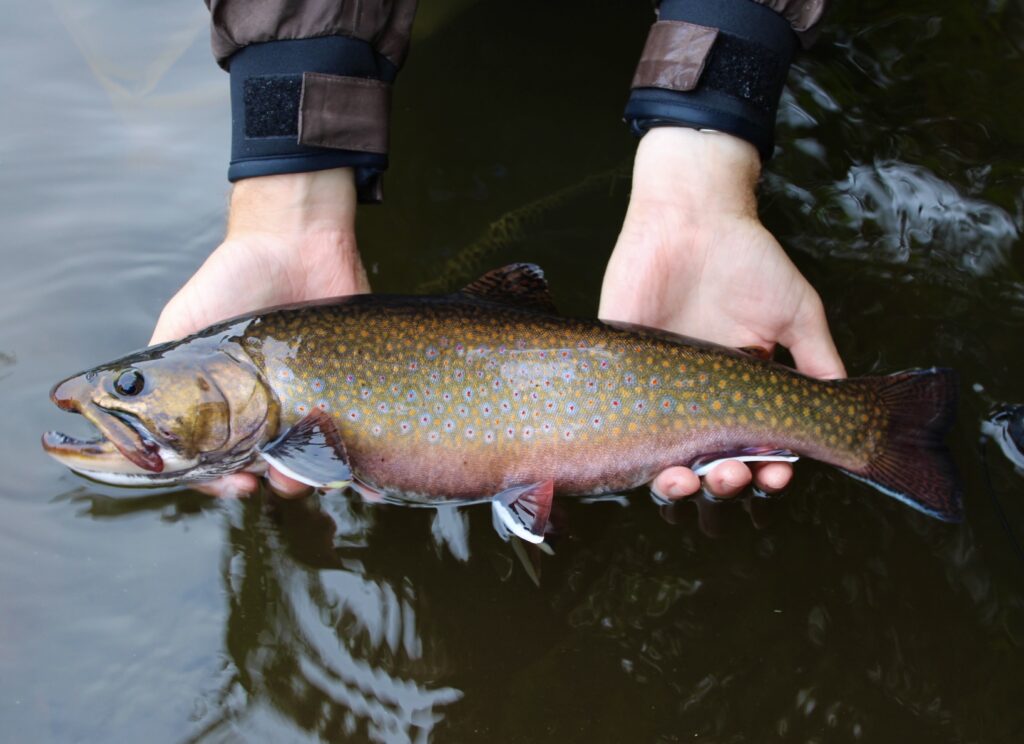

We picked up a few more nice fish over the next couple of hours, but with a couple hundred miles to make up between us and Boston we eventually had to call it. It was hard to ask for more out of these streams than what we had gotten, although I wished I could’ve stayed several more weeks in those woods. The trip was a chance to fall back into a much needed cycle of eat, sleep, and fish, and the bittersweet knowing that it wasn’t sustainable was almost nonexistent for the first few days.
My drive home would connect an over one-thousand mile long loop around New England, which despite the distance still only covered a fraction of the brook trout’s remaining native range. I may not have crossed paths with a fourteen pound sea-run char or a more likely but still rare giant in northern Maine, but I’d take it.
I get that this trip was a lot of love for one species. And who knows, a day may come where I no longer like brook trout that much. Maybe I’ll become a tropical snob and spend the rest of my days on the flats dumping money and time into tarpon and permit. The best loves leave room for growth, and if fly fishing didn’t apply to that rule I probably wouldn’t still be doing it. But for now I’m already back to following logging roads on satellite imagery, staring into the pixellated blackness of a tannin stream deep in the bush. A month in brook trout country isn’t too long, is it?
